The Basics:
Here are a couple of important concepts to understand about mycorrhizae and their benefits:
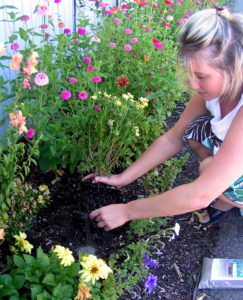
Gardening with Mycorrhizae
- Mycorrhizal fungi are living organisms that naturally reside in the soil.
- Mycorrhizal fungi live in mutually beneficial symbiotic relationships with plants. (And this relationship dates back hundreds of millions of years.)
- “Mycorrhizae. (“Myco” – “rhiza”) literally means “fungus” – “root” and describes the mutually beneficial relationship between the plant and mycorrhizal fungi.
- Mycorrhizae aid in the expansion of the plant’s root system and create a microscopic network of filaments within the growing media, which act as a living extension of the plant’s roots and actively deliver nutrients, water, and resources to the plant.
- Mycorrhizal fungi form symbiotic relationships with approximately 95% of plant species on earth.
- Benefits to plants include improved plant vitality and an increased ability to handle stress.
In summary, mycorrhizae are living biological soil organisms which help plants flourish throughout their entire life, and which can help your lawn and garden to thrive more sustainably, with fewer needs for inputs, maintenance, and attention.
Mycorrhizae can be added to your home garden, lawn, or landscaping by choosing fertilizers and potting mixes that include these organisms, or applied using stand-along mycorrhizal inoculants, available at garden centers and other home garden product retailers.
Learn the Basics of Mycorrhizae:
How to Select the Right Retail Mycorrhizal Product for You
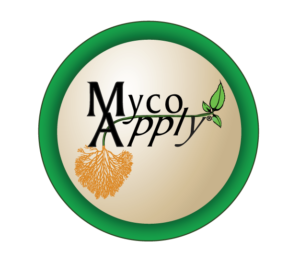 Thank you for your interest in our products! As a large-scale manufacturer, we do not package or sell Retail Products under the MycoApply® Brand which we package our professional products under. These days, however, gardeners and homeowners have many high quality plant products that contain mycorrhizae available at their local garden centers or online. Some of the products available are purely mycorrhizal on an inert carrier, others will include mycorrhizae along with other biostimulants and biological amendments, others will include mycorrhizae on a fertilizer carrier, and some soil and growing media manufacturers are now including these beneficial fungi in their potting mixes. Therefore, retail shoppers have a lot of options in order to introduce and utilize these essential microbes. There are a few things to keep in mind when shopping for mycorrhizal products for your home garden, landscaping, and lawn care, so we have devoted this page to providing an overview to help point you in the right direction.
Thank you for your interest in our products! As a large-scale manufacturer, we do not package or sell Retail Products under the MycoApply® Brand which we package our professional products under. These days, however, gardeners and homeowners have many high quality plant products that contain mycorrhizae available at their local garden centers or online. Some of the products available are purely mycorrhizal on an inert carrier, others will include mycorrhizae along with other biostimulants and biological amendments, others will include mycorrhizae on a fertilizer carrier, and some soil and growing media manufacturers are now including these beneficial fungi in their potting mixes. Therefore, retail shoppers have a lot of options in order to introduce and utilize these essential microbes. There are a few things to keep in mind when shopping for mycorrhizal products for your home garden, landscaping, and lawn care, so we have devoted this page to providing an overview to help point you in the right direction.
Below, we have compiled some tips and information for retail shoppers of mycorrhizal products, in order to help you make the most informed decision regarding which product to invest in, and ensure that you get the plant response and success that you are expecting from the products that you purchase. Please review the tips that we’ve compiled, including information on which types of mycorrhizae will work for the plants you are growing, how to find the pertinent information regarding mycorrhizal contents on product labels, how to interpret the label claims, how to apply these products, etc.
Which Type of Mycorrhizae Is Right for Me?
There are two major types of mycorrhizae available on the commercial market: Endomycorrhizae and Ectomycorrhizae
The type of mycorrhizae you want to utilize in your home garden, lawn, and landscaping depends on the type of plants that you will be treating. Please refer to our list of mycorrhizal plants for an overview on which plants are mycorrhizal, and which type of mycorrhizae they associate with. For list of mycorrhizal plants: CLICK HERE
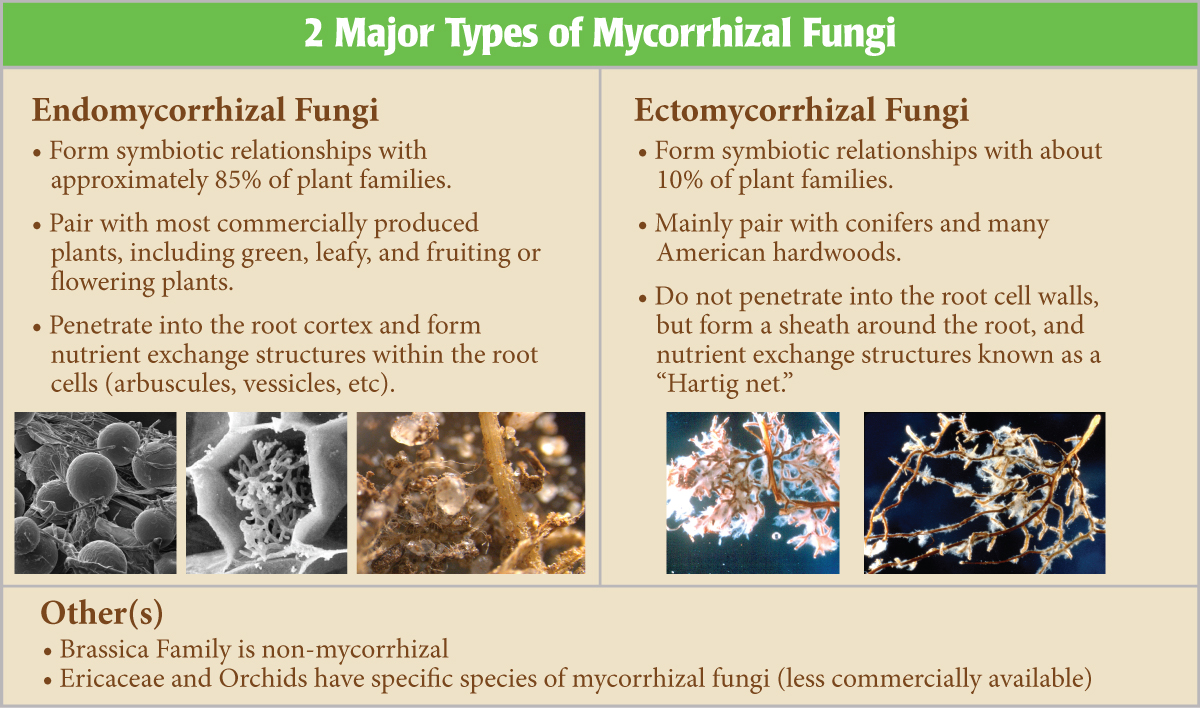
Examples of Endomycorrhizal Fungi:
- Glomus intraradices (AKA Rhizophagus irregularis)
- Glomus mosseae
- Glomus aggregatum
- Glomus etunicatum
- Glomus deserticola
- Glomus clarum
- Glomus monosporum
- Paraglomus brasilianum
- Gigaspora margarita
Examples of Ectomycorrhizal Fungi:
- Rhizopogon villosulus
- Rhizopogon luteolus
- Rhizopogon amylopogon
- Rhizopogon fulvigleba
- Pisolithus tinctorius
- Suillus granulatus
- Laccaria bicolor
- Laccaria laccata
- Scleroderma cepa
- Scleroderma citrinum
How many species do I need?
One of the many benefits of adding mycorrhizae into your gardening, landscaping, and lawn care practices is the fact that these beneficial symbiotic organisms are involved in building a healthy soil ecosystem or microbiome for your plants. And like any healthy ecosystem, biodiversity is important. Therefore, selecting products with greater numbers of species of the types of mycorrhizal fungi that you need (either endomycorrhizae, ectomycorrhizae, or both), will offer greater benefits to your plants, throughout their entire life cycles.
Research has shown that diversity of mycorrhizae in the plant’s root system is important, as these different species of mycorrhizae provide different benefits to the plant under variable circumstances. For instance, some species are better at assisting in nutrient uptake, while others are more proficient in assisting the plant with water efficiency, and others are responsible for mitigating toxins and salts from reaching the plant’s vascular system. Research has also shown that different species of mycorrhizae provide different benefits during different seasons, with some doing the heavy lifting early in the growing season, and others kicking in during the warmer drier months, and others providing benefits towards the end of the growing season or throughout the winter.
Therefore, we recommend choosing products with greater diversity (at least 4 species in endomycorrhizal products, and at least 7 species in ectomycorrhizal products), in order to ensure that you are providing the ideal soil microbiome for your garden, landscaping, and lawns.
Where can I find this information on a product label?
The mycorrhizal content of any retail product should be listed in the Guaranteed Analysis (generally on the back or side of the packaging, in its own box or section of the label to distinguish it from marketing claims and application instructions).
In general, the content of mycorrhizae and other biological components will be in a sub-section of the Guaranteed Analysis which starts with the header: “ALSO CONTAINS NON-PLANT FOOD INGREDIENTS”
The quantities of these ingredients are usually listed in units known as “propagules” which is a general term describing a unit capable of colonizing a plant’s root system (spores, hyphae segments, and colonized root segments). The label will usually list the number of propagules per weight (gram, pound, etc), or volume (cubic centimeter, cubic foot, cubic yard, etc).
Here are some examples:
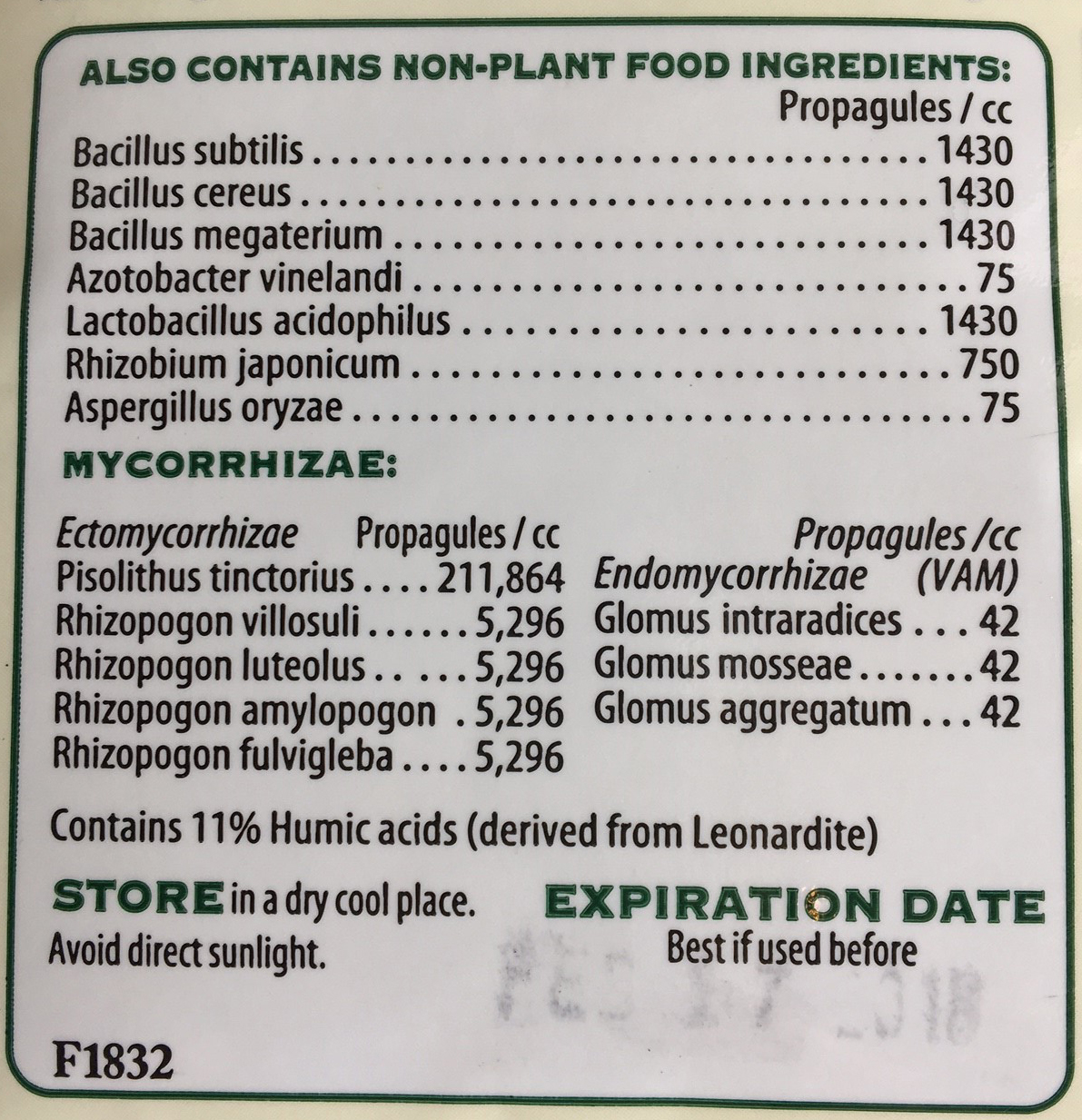
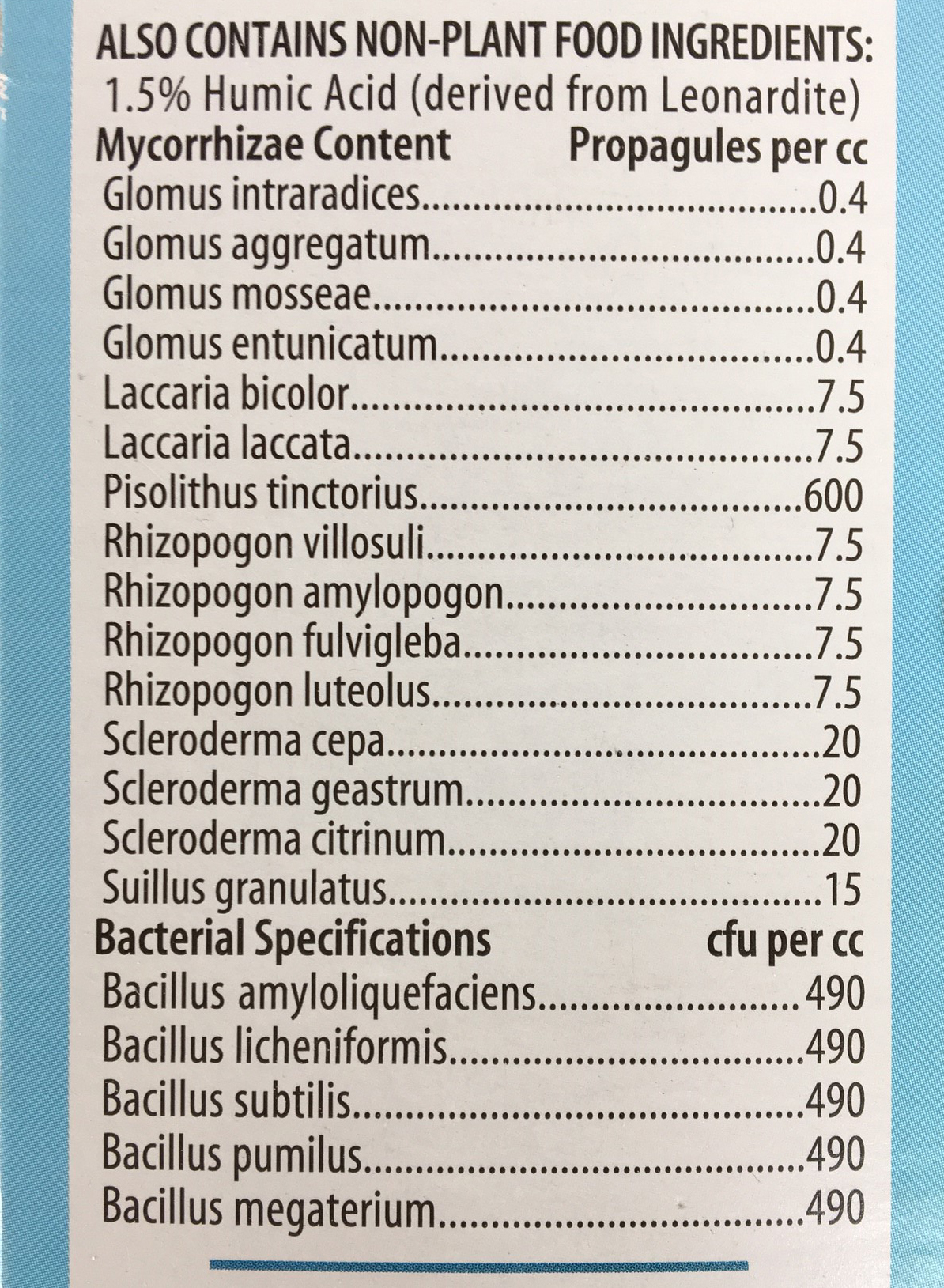
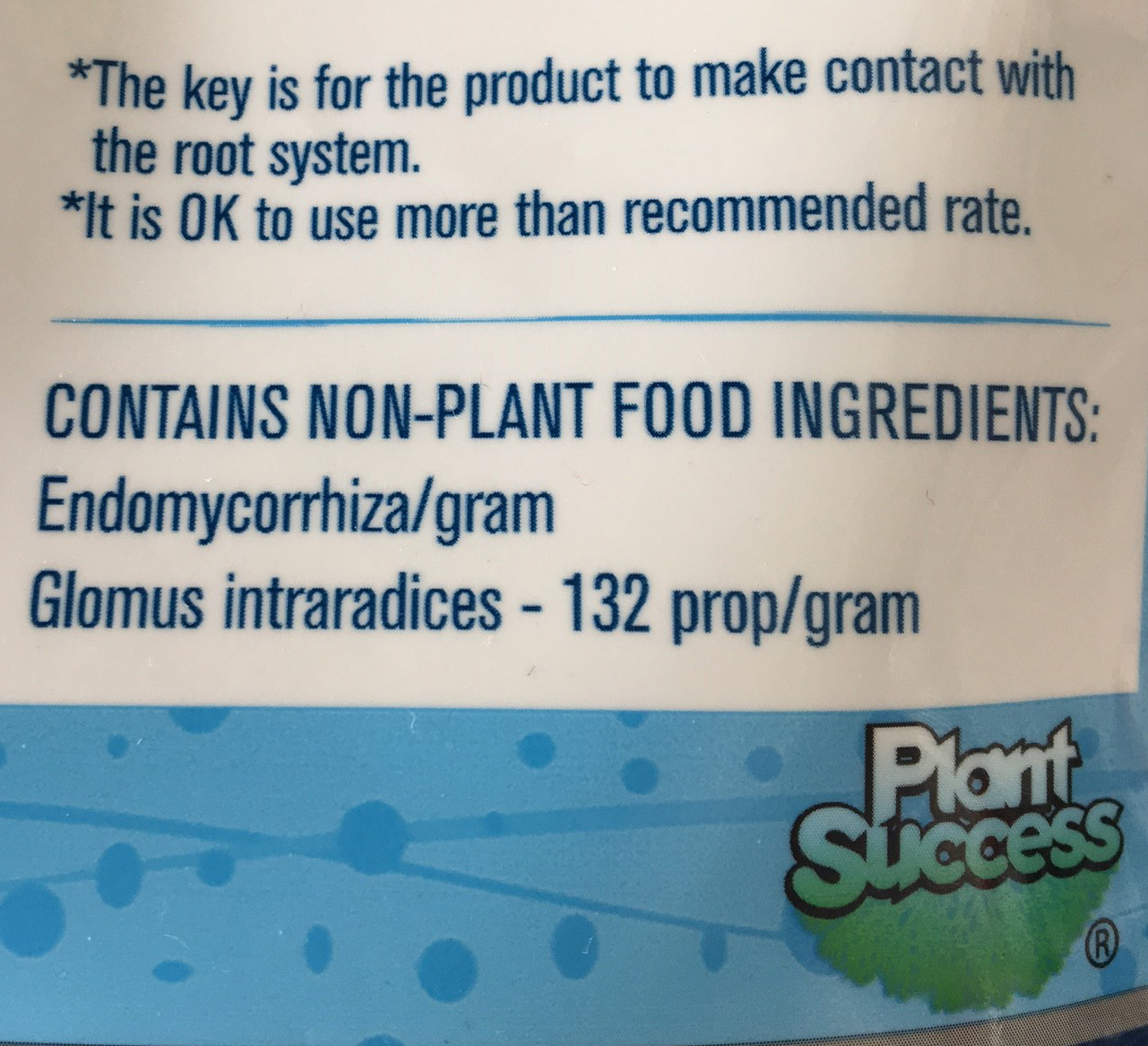
How much of the product should I use?
We recommend, as a general rule, to refer to the application rates and instructions on the specific product that you are using. This is a general precaution, due to the fact that there may be other ingredients that are included with the mycorrhizal content which you would not want to over-apply, however, the mycorrhizal fungi themselves can’t do damage due to over-application. If you are using a mycorrhizae-only product, feel free to apply more than the recommendation, as over-application of these biological ingredients will do no harm to your plants.

